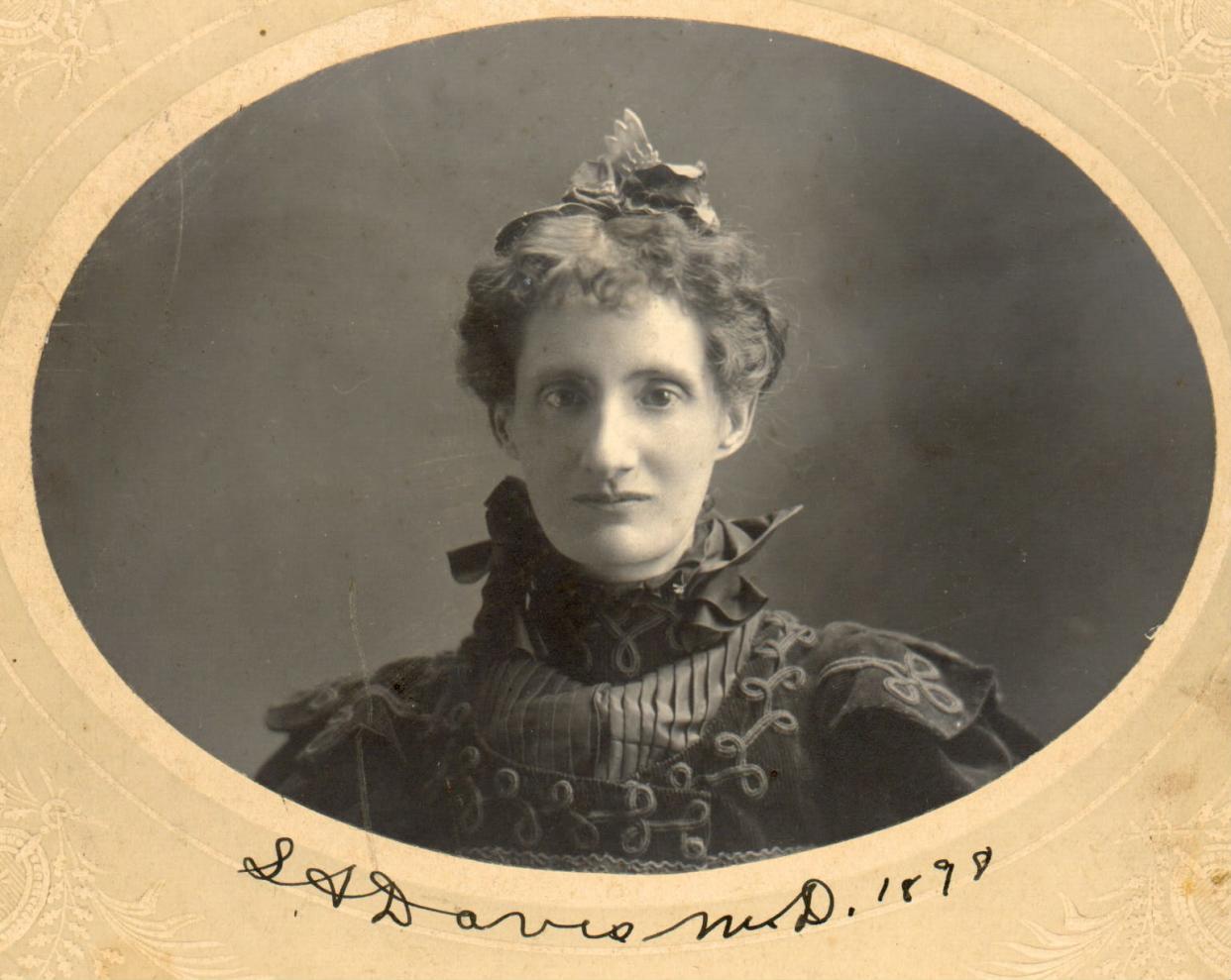The female doctor who served Salem residents from 1890 to 1941

It was likely a warm summer day when the steam locomotive huffed and hissed into the Salem railroad depot in 1890, and the travel-weary, newly minted graduate of the American Medical College of St. Louis stepped onto the platform.
As the account recorded in the Capital Journal newspaper some 70 years after the fact: “A Salem doctor had engaged this young physician to assist him with his practice. Doubtless he expected to receive a young doctor groomed in tails, with sideburns and wearing a topper. When he came to the Salem depot to receive his new assistant and perceived that Dr. Susan Araminta Davis was a woman, he refused to even help her with her bags.”
It likely wasn’t the first or last time Davis faced difficulties being a woman in the field of medicine in the late 19th Century. She was one of only four women in her graduating class, and the school had only been accepting women for a few years when she matriculated.
Perhaps experiences like these were what led her to attend the Congress of Women held in Portland in June 1896, a suffrage movement event where she likely heard Abigail Scott Duniway, Susan B. Anthony and Sara Brown Cooper speak on the rights of women.
Undeterred by her welcome party to Salem, Davis rented an office, hung her own shingle and took out an advertisement in the Oregon Statesman: “Minta S.A. Davis, M.D. Graduate of American Medical College, offers her professional services to those who may need them. Special attention given to diseases of women and children. Office upstairs in New Bank Building, Commercial Street.”
The office, which also served as her home in the early years, stood at 265 Commercial St. Northeast, on the west side of the street about midway between Court and Chemeketa streets. The building no longer stands. She would continue to practice medicine in Salem from that office for more than 50 years.
Described as 6’ tall and 115 lbs. in the 1895 Marion County Census, she must have been a commanding sight perched atop the buggy she drove to make house calls.
After a rocky start, Davis did make some headway with her peers locally. She served as an officer (both vice president and treasurer) of the Oregon Eclectic Medicine Association (OEMA) — a group of like-minded physicians who ascribed to the eclectic philosophy.
“Eclectics,” as the newspaper termed them, were physicians who aligned themselves somewhere between allopaths and homeopaths in the quickly professionalizing medical discipline. Firm believers in scientific method, they also looked to other disciplines to inform their care, including herbal remedies and physical therapy.
They believed that every patient was unique and that therapeutics should be applied with specificity to the situation and symptoms, as opposed to rote prescription based on a disease name or diagnosis.
As fellow OEMA member and Salem doctor W.S. Mott wrote of the Eclectics creed upon their founding: “It means a rational practice of medicine. It means not only the choosing of good common sense, but the rejection of nonsense. In short it means the art and practice of the principles of specific diagnosis and specific medication. It means not only the choosing of proper remedy in appreciable doses for direct effect of certain symptoms in a given case, but also the rejection of remedies or means which endanger or impair life or which leaves an impaired health. It means the selection of such remedies and means as conserve life, assuage pain, shorten the duration of disease, and give a sound recovery.”
We get glimpses of Davis' medical approach in newspaper coverage of her practice. She could set a bone to precision and utilized anesthetics like ether similar to what an allopath would do. But she also began researching and cultivating her own herbal remedies. She experimented with growing ginseng and Hydrastis (Golden Seal) on her west Salem farm for medicinal purposes.
Just before her 40th birthday, and after nearly 16 years of practicing medicine in Salem, Davis married fellow Salem physician Dr. Orland W. Bean in a quiet ceremony. Their honeymoon to California included taking in “a lecture course at the Los Angeles Eclectic Medical College.”
The couple moved into a house at 595 Center St, (northwest corner of Center and Church streets), where Dr. Davis Bean, as she was called after her marriage, would live until her death.
In addition to their medical practice, Drs. Bean and Davis Bean purchased the Holly Summit fruit ranch in west Salem, about four miles from town in about 1911. It was there they experimented with growing herbs for treatments and got away from the hustle and bustle of town. But they were always reachable.
As numerous articles taken out in the Salem papers read: “Dr. Davis Bean will be in the country much of the time after office hours,” but that “Dr. Davis Bean will answer calls from farmer’s phone 58F13 after office hours and on holidays.”
In about 1915, Bean had to start scaling back his practice because of ill health, but Davis Bean continued her practice well into her 70s and her diagnosis with bladder cancer. Her last house call was made less than a month before her death in 1941.
Want to learn more about the history of health in our community? Check out the newest exhibit at the Willamette Heritage Center —To Your Health — on display through Oct. 7. More information at willametteheritage.org.
Kylie Pine is curator and collections manager at the Willamette Heritage Center, a five-acre museum in Salem dedicated to connecting generations by gathering, preserving and sharing the history of the Mid-Willamette Valley.
This article originally appeared on Salem Statesman Journal: Dr. Susan Araminta Davis served Oregon from 1890 to 1941

